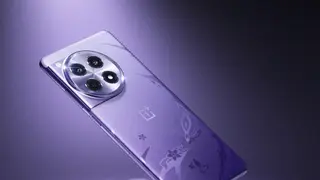HTC arguably has the best Android smartphone in the market but the Taiwanese handset maker has not been able to translate this into higher market share or better profits. Now, the company is shifting gears to get into the entry level segment with its first sub-₹10,000 phone called HTC Desire210 in a bid to capture the massive low-end of the smartphone category. At the same time it unveiled its latest flagship product — the HTC One M8 priced at ₹49,900. Business Line spoke with Chialin Chang, President, Global sales and CFO, HTC to know how this dual strategy will pay off for the company this year.
HTC has now launched a phone for the entry level buyers at a time when this market is already crowded. Has HTC delayed this move for too long?
For the last one year, we have been thinking hard about whether we want to introduce a phone below the ₹10,000 price point. We didn’t want to launch another phone. We thought about how we can bring something different. It’s not about pricing, it’s about giving consumers an option than what’s already available in the market.
Why did you choose to launch the phone in India ahead of other markets?
We know that if we can succeed in India then we can succeed in not just emerging markets but also other industrial economies where entry level smartphones are growing. In India, the competitions high and consumers have exquisite taste.
So you are looking at India as a test market for your global entry level smartphone strategy?
Yes, if we do well in India, most likely we will do well globally.
When we design our products we have Indian users on our minds. All products we sell in India are reflective of our entire product portfolio. Indian consumers appreciate design, appearance of the phone. We are encouraged by that. We feel that if Indian users like us then it can be done elsewhere.
How will you get Indian users to pick HTC when your rivals like Samsung are spending a lot of time and money in driving volumes?
What we want to achieve is to get Indian users to aspire for our flagship product. For that we need to come out with more direct, bold messaging on our differentiation. Once you compare you know the experience.
On the retail side, we have to get the retailer to recommend HTC products. We have an incentive scheme but our focus is to get the retailers who interact with consumers to like it personally.
Will we see HTC being more aggressive in the market?
We need to be more active on social, digital media. Our portfolio also needs to be more robust.
In the next few weeks, we will announce another portfolio of phones in various price segments. On the sales side, we are meeting our channel partners with a focus to create market pull. We also need to go deeper and broader beyond tier-I cities.
Do you see HTC growing as a standalone company or do you think it is up for M&A action?
Our chairperson has said that HTC is not for sale. The beauty about this industry is that the number one player this year is not guaranteed that it will be number one next year. It’s like boxing, there’s always the next round which you can turn it in your favour
What about HTC acquiring another player?
To end all speculation, we will probably not acquire. Our thinking is how would an acquisition improve innovation.
So are you approaching the market with a challenger’s mindset?
We have the best products so we are always thinking about how we can make it better. Everyone in the company is thinking about next year. We have revolutionised the market this year so now we are thinking about how to take one step ahead.
On the marketing side, we are a challenger in the sense that we want users to experience HTC and make them see through all the clutter and take notice of HTC products.







Comments
Comments have to be in English, and in full sentences. They cannot be abusive or personal. Please abide by our community guidelines for posting your comments.
We have migrated to a new commenting platform. If you are already a registered user of TheHindu Businessline and logged in, you may continue to engage with our articles. If you do not have an account please register and login to post comments. Users can access their older comments by logging into their accounts on Vuukle.